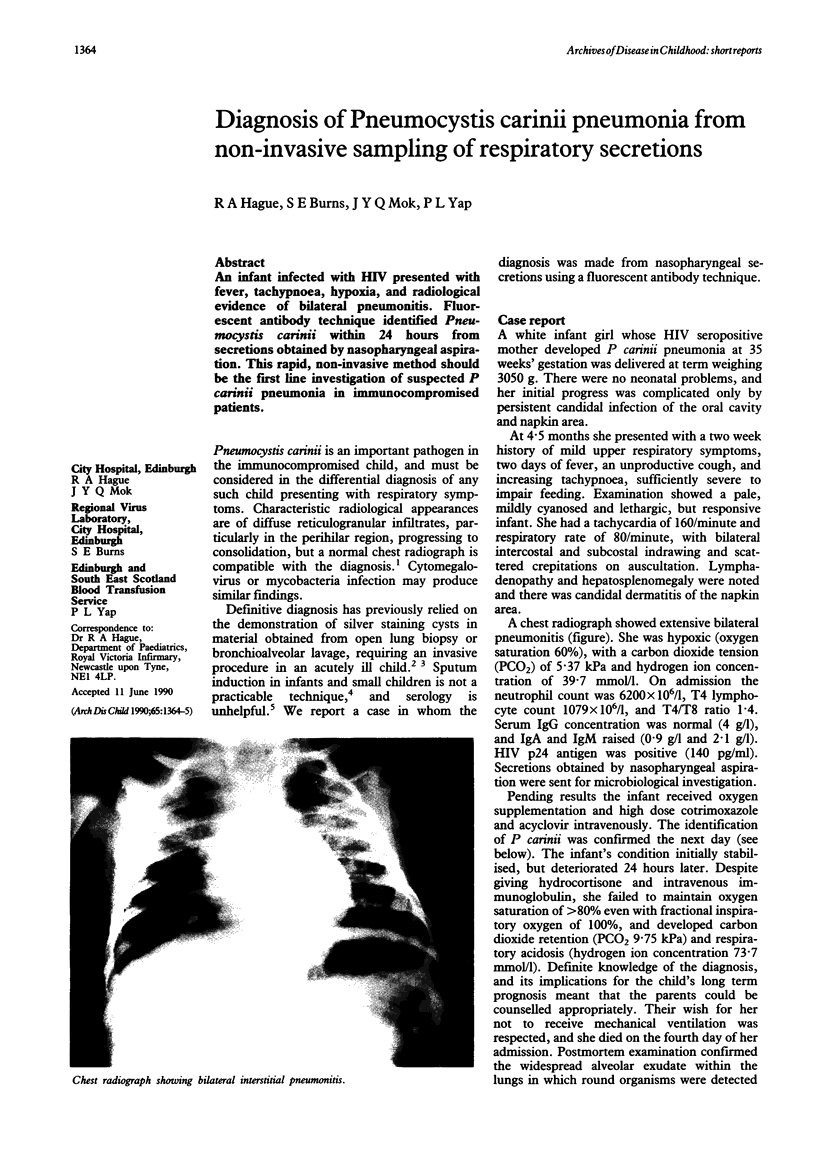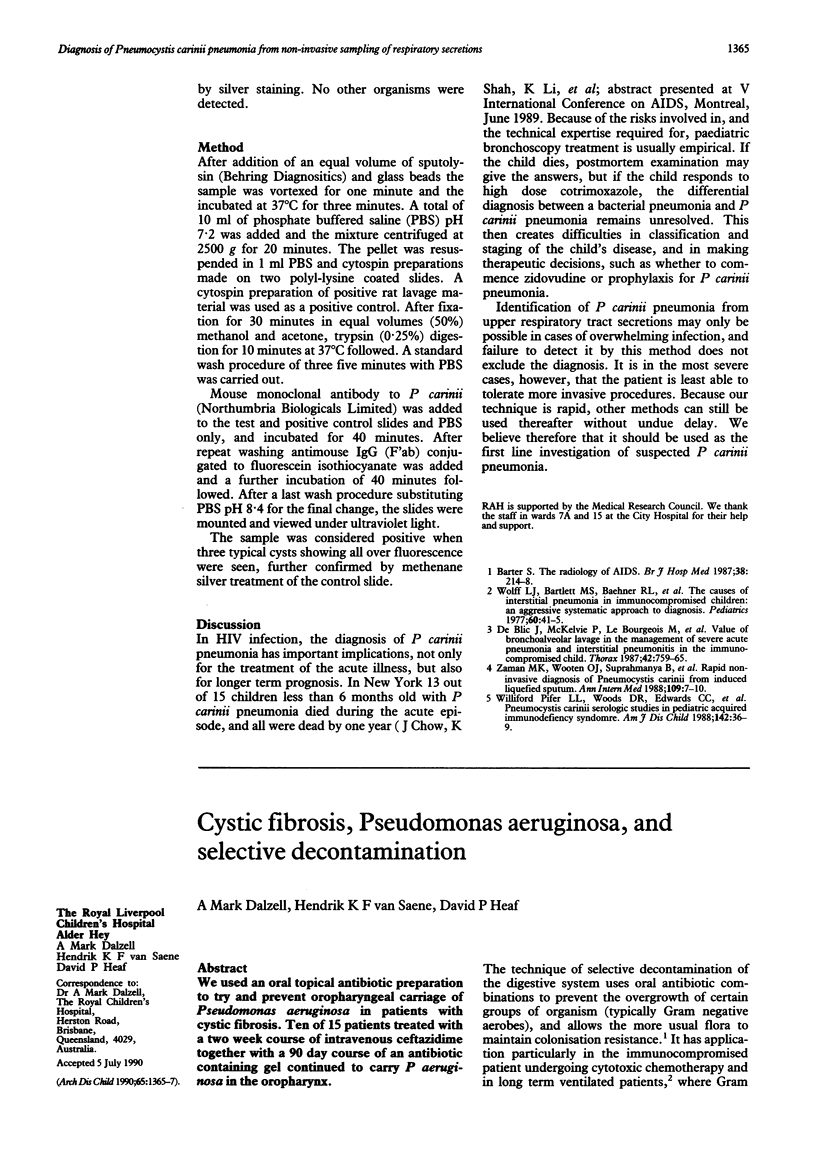Abstract
An infant infected with HIV presented with fever, tachypnoea, hypoxia, and radiological evidence of bilateral pneumonitis. Fluorescent antibody technique identified Pneumocystis carinii within 24 hours from secretions obtained by nasopharyngeal aspiration. This rapid, non-invasive method should be the first line investigation of suspected P carinii pneumonia in immunocompromised patients.
Full text
PDF

Images in this article
Selected References
These references are in PubMed. This may not be the complete list of references from this article.
- Pifer L. L., Woods D. R., Edwards C. C., Joyner R. E., Anderson F. J., Arheart K. Pneumocystis carinii serologic study in pediatric acquired immunodeficiency syndrome. Am J Dis Child. 1988 Jan;142(1):36–39. [PubMed] [Google Scholar]
- Wolff L. J., Bartlett M. S., Baehner R. L., Grosfeld J. L., Smith J. W. The causes of interstitial pneumonitis in immunocompromised children: an aggressive systematic approach to diagnosis. Pediatrics. 1977 Jul;60(1):41–45. [PubMed] [Google Scholar]
- Zaman M. K., Wooten O. J., Suprahmanya B., Ankobiah W., Finch P. J., Kamholz S. L. Rapid noninvasive diagnosis of Pneumocystis carinii from induced liquefied sputum. Ann Intern Med. 1988 Jul 1;109(1):7–10. doi: 10.7326/0003-4819-109-1-7. [DOI] [PubMed] [Google Scholar]
- de Blic J., McKelvie P., Le Bourgeois M., Blanche S., Benoist M. R., Scheinmann P. Value of bronchoalveolar lavage in the management of severe acute pneumonia and interstitial pneumonitis in the immunocompromised child. Thorax. 1987 Oct;42(10):759–765. doi: 10.1136/thx.42.10.759. [DOI] [PMC free article] [PubMed] [Google Scholar]



